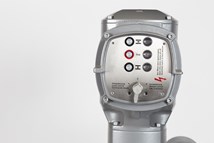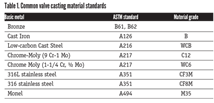Critical Control Valve Considerations for the LNG Market
The relatively recent rise in demand for liquefied natural gas, or LNG, has fueled a boom with regards to the construction of import and export terminals.
Current LNG Processes
- inlet feed gas control valve
- rich amine letdown control valve
- amine pump recycle control valve
- gas to flare control valve
- compressor anti-surge control valve and
- Joule-Thomson/expander bypass control valve
Inlet Feed Gas Control Valve
Rich Amine Letdown Control Valve
Amine Pump Recycle Control Valve
- Facilitate start-up and commissioning of acid absorber unit
- Boost suction pressure of pump to ensure that it is above amine vapor pressure
- Protect pump from cavitation damage
Gas to Flare Control Valve
With service conditions characterized by high pressure drops and flow rates, this valve’s primary purpose is to safeguard the process against overpressure.
Compressor Anti-Surge Valve
The best valve body solution is a large angle construction outfitted with slotted or drilled-hole noise attenuation trim. Although it is common to impose an 85 dB(A) sound pressure level limit, this requirement is not critical as the valve operation is extremely intermittent – or at least it should be.
The criticality of this valve necessitates conducting a factory acceptance test (FAT) to verify the performance characteristics of the fully assembled valve unit. Because of the inherent complexity of the instrumentation package, it is also advisable to have some type of field acceptance test to confirm that the integrity of the unit was maintained during shipping.
Joule-Thomson / Expander Bypass Valve
Summary
Early understanding of technical challenges and proven solutions improves the mitigation of project schedule risk and potential construction or commissioning delays. Providing effective and reliable protection of critical and costly equipment is of the utmost importance. Control valve failure or sub-optimal performance can shut down a complete LNG train, and with gross revenues ranging from $16 million to $20 million per day, that simply isn’t an option.
Loyd Hilliard is severe service business manager at Puffer-Sweiven. Contact him at Loyd.Hilliard@puffer.com.
All images courtesy of Emerson Process Management
RELATED CONTENT
-
Ball Valve Basics
Welcome to the first in a series of Valve Basics articles, each focused on a major product type and written especially for newcomers to the industries that use and make valves and related products.
-
Valve Selection for Bypass of Control Valves: A Case Study
A bypass line including a bypass valve is typically installed to provide continuous operation in case of regular maintenance of a control valve.
-
Proper Care of Knife Gate and Slurry Valves
How to resolve—and avoid—field failures of knife gate and slurry valves























 Unloading large gate valve.jpg;maxWidth=214)


